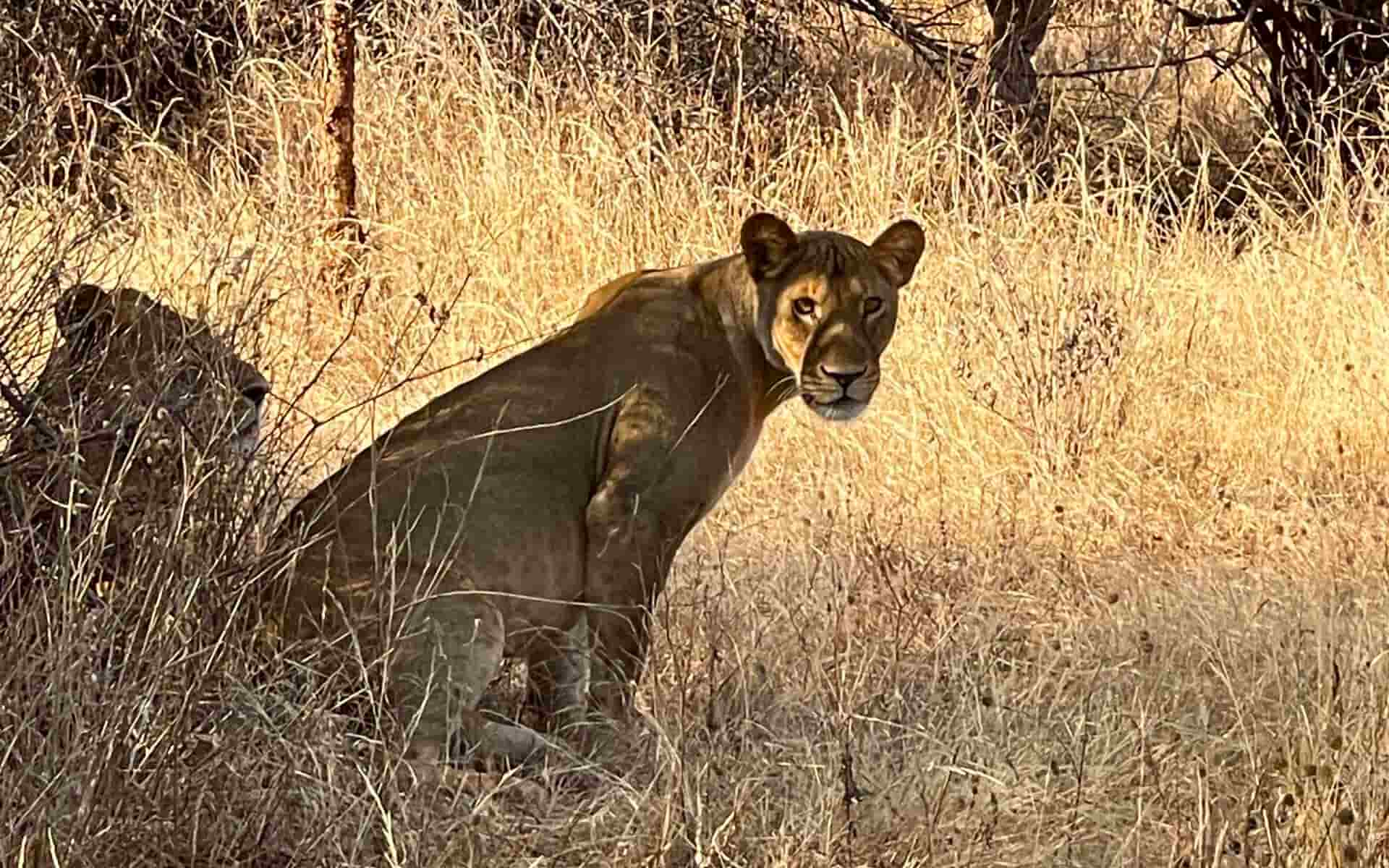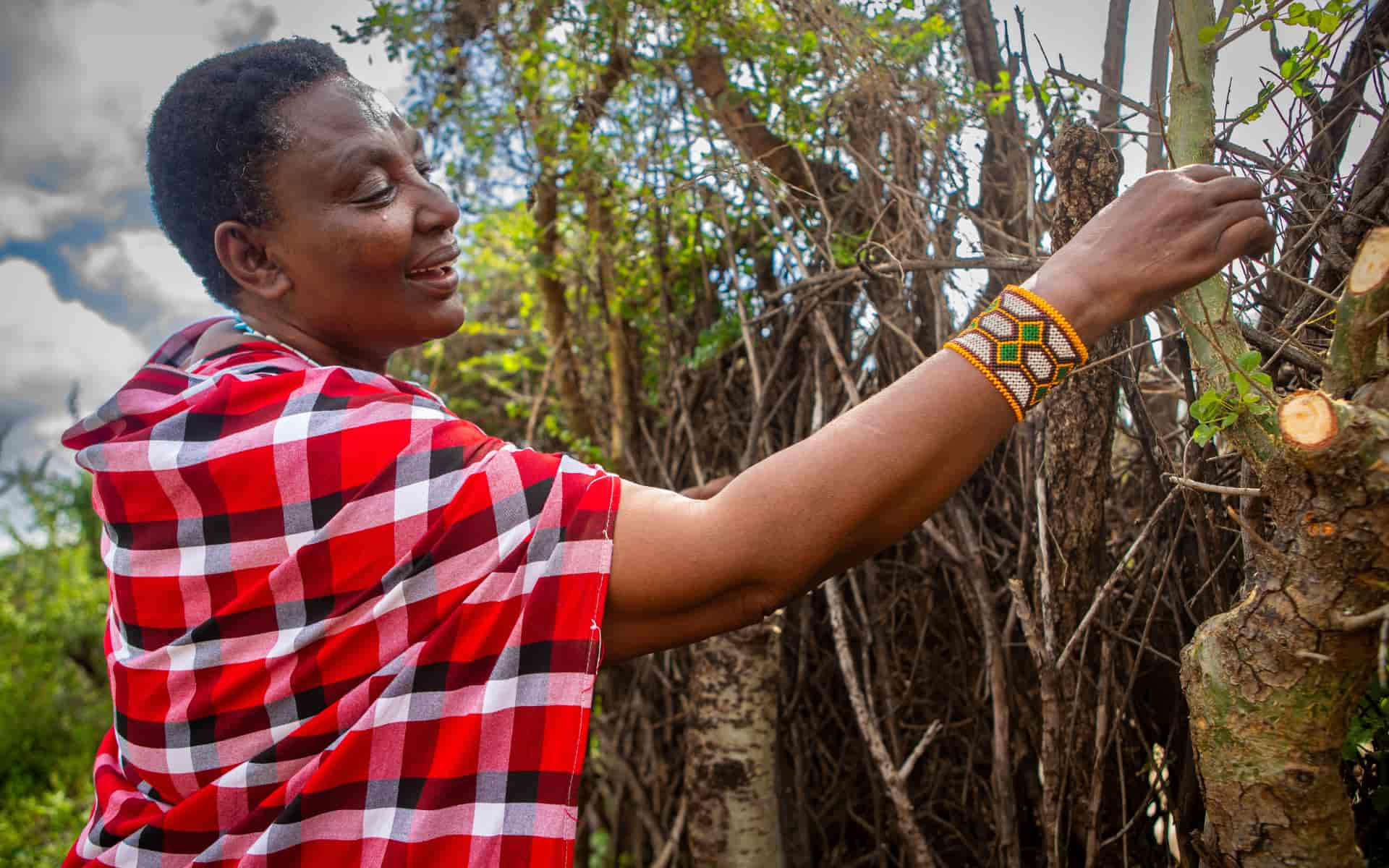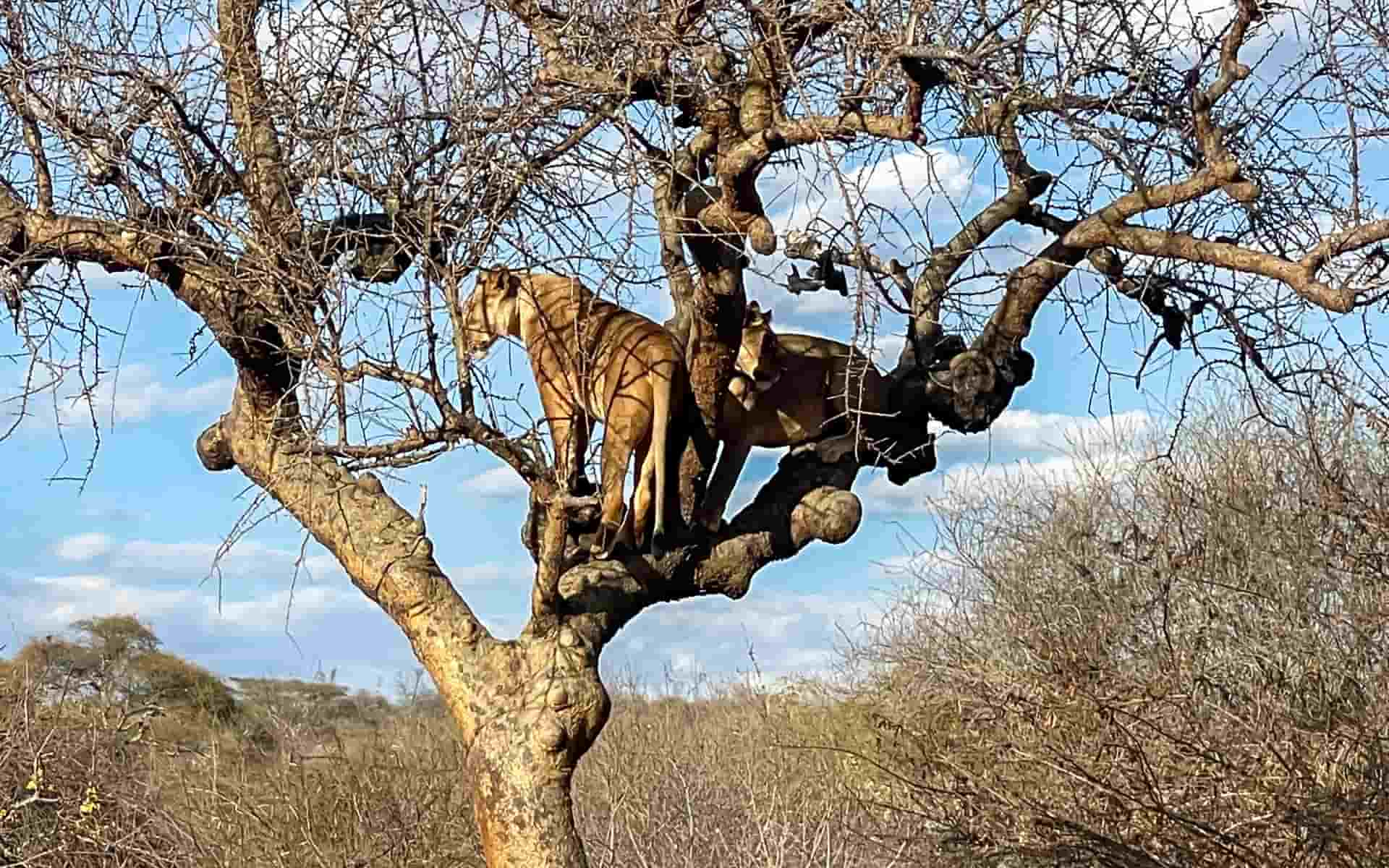When Lions Come Close
Early mornings in Simanjiro start with familiar sounds: the soft bells of cattle moving to the plains, the dust rising in the wind, and the deep roar of the Noloholo pride echoing from beyond the Mbokoso Canyon.
For many years, that roar meant danger to Maasai families nearby. Lions caused lost livestock and hardship. Over time, however, that sound has come to symbolize coexistence and effort.
This October, as the dry season stretches on, wildlife has moved closer to villages in search of food. On October 6, a lion from the Noloholo pride attacked a cow in Loibor Serrit village. The cow belonged to Roing’ot Ndiang’ada, whose new boma sits near the canyon and wasn’t yet protected by a Living Wall.
When the incident was reported, Saitoti Petro, a Warrior for Wildlife trained by African People & Wildlife, went immediately to the site. Specializing in human–carnivore conflict response since 2017, Saitoti recorded the event, spoke with the family, and shared tips on preventing future losses.
They discussed what to do next: preparing for Living Wall construction. This process starts months in advance. Families collect and plant native Commiphora tree cuttings during the dry season. This ensures the trees will be strong by the time the wall is built the following year. And the preparation shows the commitment each boma owner makes to protect livestock and wildlife.
Across the Tarangire–Manyara landscape, 62 officers and program assistants like Saitoti support families in this effort with support from partners like Trias and the Lion Recovery Fund. They are part of the larger network of 180 men and women serving as Warriors for Wildlife in all of our conservation landscapes, where work combines quick responses with long-term community education.
Since 2008, APW and local communities have built 2,117 Living Walls, protecting 320,758 cattle worth over $30 million and benefiting 24,634 people. In the process, we've planted 276,684 trees. And at the same time, Saitoti and his fellow coexistence officers helped prevent retaliation in 76% of reported human-lion conflict incidents, saving the lives of an estimated 151 lions.
It takes layers of conservation to make coexistence stand the test of time.
For families around Mbokoso Canyon, these efforts bring fewer livestock losses and a growing sense of security. When the rains return in November, the Simanjiro plains will green again, and wild prey such as zebra and buffalo will move back into the area. With more natural food available, the Noloholo pride will turn its attention to wild species instead of cattle. The pride’s territory lies outside Tarangire National Park in the surrounding communal lands, a landscape where lions, livestock, and people continue to share space and seek balance, season after season.



.jpg)

